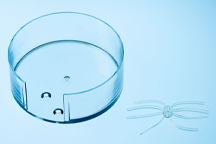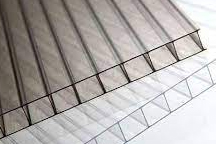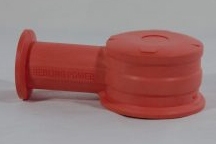Acrylonitrile Butadiene Styrene (ABS)
 Rebling has vast experience in plastic injection molding the many different grades of ABS plastic available today including high-impact, glass-filled, transparent, and high luster formulations. We have molded ABS plastic components in a wide range of colors for applications that include office machines, electronics, and consumer-related products. Learn more about our ABS Molding services below.
Rebling has vast experience in plastic injection molding the many different grades of ABS plastic available today including high-impact, glass-filled, transparent, and high luster formulations. We have molded ABS plastic components in a wide range of colors for applications that include office machines, electronics, and consumer-related products. Learn more about our ABS Molding services below.
Properties of ABS plastic
ABS is an amorphous thermoplastic copolymer blended from Acrylonitrile, Butadiene, and Styrene. Being an amorphous thermoplastic, it is easily plastic injection molded, and it provides uniform shrinkage in both the flow and transverse-to-flow directions, enabling Rebling to accurately predict mold shrinkage from the outset. This uniformity in shrinkage during ABS Plastic molding can be maintained over a wide processing range, so precise dimensional control is easier to achieve when compared to a crystalline thermoplastic. Uniformity in shrinkage also results in minimal warpage after plastic injection molding, making ABS injection molding a viable option for many different applications.
Secondary Operations for ABS plastic parts
Rebling can supply ABS plastic injection molding components that require post molding operations such as ultrasonic welding to form an assembly; secondary machining operations; installation of metal inserts via ultrasonic insertion; and decorated moldings using hot stamping, pad printing, and laser marking processes. A unique characteristic of ABS plastic thermoplastic molding is the ability to chrome plate the material, thus lending itself to applications such as decorative trim, automotive parts, medical devices, and toys. Rebling engineers can assess your project to determine if ABS molding is a possibility.
ABS plastic injection molding design
Rebling design engineers have extensive experience in ABS plastic molding and optimizing ABS plastic part designs for functionality, cosmetics, cost, and processing. Since plastic injection molding of ABS readily shows evidence of sink marks, maintaining uniform wall thickness throughout the part is essential in producing an aesthetically pleasing molding. Ribs and gussets should be used to core out thick sections. The rib thickness should not exceed 50% of the intersecting wall thickness. Bosses incorporated in the design can also result in sink marks if not properly designed. Sharp corners result in stress concentrations and should be avoided. To minimize and eliminate these issues, Rebling engineering staff should be consulted prior to issuing a final design. This design assistance is provided free of charge.


 Thermoplastic
Thermoplastic ABS
ABS Acetal
Acetal Acrylic
Acrylic EMI
EMI Noryl (PPO)
Noryl (PPO) Nylon (Polyamide)
Nylon (Polyamide) Polybutylene Terephtalate (PBT)
Polybutylene Terephtalate (PBT) Polyether Ether Ketone (PEEK)
Polyether Ether Ketone (PEEK) Polycarbonate (PC)
Polycarbonate (PC) Polyethylene (PE)
Polyethylene (PE) Polyphenylene
Polyphenylene Polypropylene (PP)
Polypropylene (PP) Polystyrene (PS)
Polystyrene (PS) Polysulfone (PSU)
Polysulfone (PSU) Thermoplastic Elastomers
Thermoplastic Elastomers UHMW
UHMW Polyetherimide (Ultem)
Polyetherimide (Ultem)